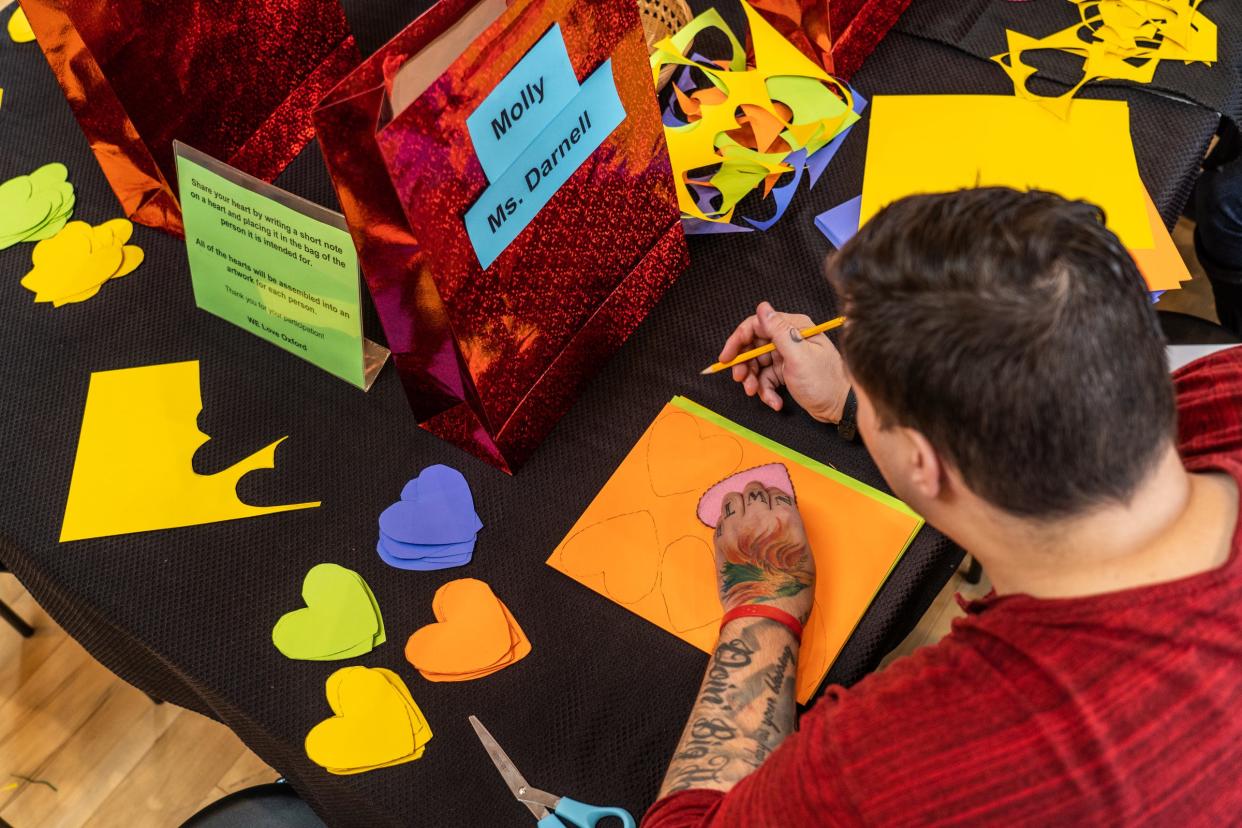Michigan near rock bottom for student to counselor ratios in the nation. How it affects students.

In Michigan schools, counselors are on the frontlines in supporting students: They are college and career counselors. They nudge students forward and encourage student interests.
And sometimes, even though they are not therapists, they are among the first adults to intervene in a mental health crisis.
The job is complex and stressful. And there are too few counselors per student in Michigan, according to national and local advocacy organizations.
Michigan is second only to Arizona in the nation for the highest student to counselor ratio at 671 students to one counselor, according to data from the 2019-20 school year, the most recent data available. The ratio recommended by the American School Counselor Association is 250:1. The shortage of counselors pairs with a shortage of school psychologists, too, another critical role in helping students manage emotions.
Amid a pandemic and now in the aftermath of a traumatizing school shooting that's rattled communities across the state, students need even more help.
"There's been a lot of trauma, there's been complex trauma, because it's not just one thing but multiple things," Lauren Mangus, president of the Michigan Association of School Psychologists, said. "Everyone's been running on high alert."
Short on counselors
Terri Tchorzynski, president of the Michigan School Counselor Association, said the shortage affects all grade levels, but is particularly severe in elementary schools. Ratios at high schools are better but still not ideal.
A counselor's job involves being a proactive force in a student's life, supporting them academically and emotionally. With proactive strategies, such as teaching classes about regulating feelings and actions, counselors can intervene before a student is in a mental health crisis —perhaps even before a student becomes a danger to others.
With a shortage of counselors, however, proactive intervention is a lot harder.
"When we have ratios of 650 or more, it's hard to reach all students especially as the needs with mental health increase," she said.
Tchorzynski said before 2020, she would have attributed the shortage of counselors to a lack of funding. But even with a $6 billion infusion of federal pandemic relief dollars into schools, districts are struggling to find counselors.
Michigan has about 6,300 licensed school counselors, Tchorzynski said. But only about 2,100 are practicing. Some leave because counselors are thrown into doing work that doesn't have to do with counseling, she said.
More: Michigan suspended school security funding, expanded after Parkland, during pandemic
More: Michigan school, mental health professionals have to manage students' COVID-19 anxieties
"A lot of times school counselors are being used for clerical or administrative tasks or test administration," she said. "Those aren't the reasons that school counselors went to the profession. They want to help students in different ways."
Short on psychologists
Michigan's ratio of school psychologists to students is 1,521:1, according to 2019-2020 data from the National Association of School Psychologists. The organization recommends a ratio of 500:1. To compare with nearby states: Ohio's ratio is 801:1; Pennsylvania's is 1078:1.
Mangus said the ratio from district to district varies, some with a 2,000:1 ratio and some 1,200:1.
School psychologists go through specialized training in graduate school. They support students in a range of ways, from supporting student mental health to conducting academic and special education assessments.
"We're the ones that kind of help administrators look to see what are our suspensions, what's our attendance look like? Who's at risk? Who's having some behavioral challenges," she said. "It's like a temperature or blood pressure check."
This year, Mangus said, many have retired from the profession after a particularly challenging few years helping children through the pandemic. The profession is also seeing higher-than-usual rates of burnout and compassion fatigue — a kind of stress caused by caring for traumatized people.
"We're all human and we have to really take care of ourselves so that we can be healthy for the long term," she said.
Her organization is working to raise the profile of school psychologists, so policy makers can recognize their importance and work on policies that can help bring more people to the profession. For instance, student loan debt forgiveness for school psychologists could help attract more to programs, she said.
Districts are also finding success in grow-your-own programs, which encourage aides and other school employees to attend universities to become school psychologists.
Across Michigan, Mangus said it's important for families to recognize that humans are resilient and to recognize the outpouring of support and love that's occurred in the wake of tragedy, such as with last week's Oxford High School shootings. Psychology organizations have worked together to send in as many counseling resources as they can to families in Oxford needing help.
"There are so many people who are so caring, and who want to be supportive, and who are helpers and people coming together," she said. "It's remarkable and I don't want us to lose sight of that."
Contact Lily Altavena: laltavena@freepress.com or follow her on Twitter @LilyAlta.
This article originally appeared on Detroit Free Press: Michigan has one of the worst student-to-counselor ratios in nation

